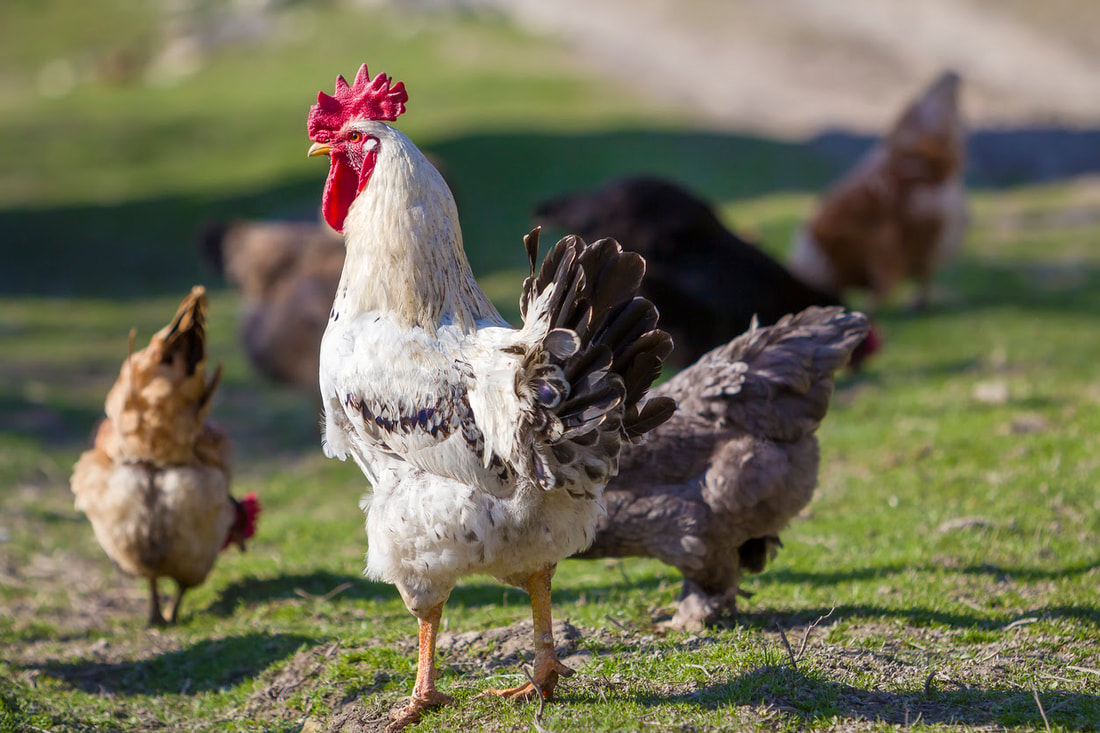|
Chickens never stop scratching, hunting and eating-and neither do we. Wouldn't it be great if we could share the products of our next harvest with our flock by planting healthy, easy to grow fruits and veggies that would feed all of us? Whether you're planning a backyard garden or have a greenhouse, there are plenty of awesome crops awaiting your discovery. Gardeners and homesteaders alike can take advantage of these fruits and veggies because they're easy to grow, produce large amounts of food, and are packed with the nutrition both humans and chickens need to stay fit and productive.
Top 10 Sustainable Foods for You & Your Brood Chickens and people love the following easy to grow herbs, fruits, and veggies. The good news is, they are crops that grow all across the country regardless of your gardening zone. 1) Broccoli Greens: Provide flowers for people, leaves and stems with a little grit for the chicks. Nutritional Values: Vitamin B1, B2, B3, B5, B6, B9, Vitamin C, Vitamin A, Calcium, Iron, Magnesium, Phosphorus, Potassium, Zinc 2) Nasturtiums: Grows annually with human grade foliage and flowers, plant them alongside your fence for the chicks to munch on. Nutritional values: Sodium, Vitamin C 3) Beet Greens: Thrives in both warm and cool weather, chickens love these and you can add them to soups just as you would celery. Nutritional Values: Vitamin K, Vitamin C, Vitamin A 4) Carrots: Best of both worlds; carrots for your mirepoix and the healthy greens get gobbled up by the chickens. Nutritional Values: Vitamin A, Calcium, Vitamin D, Vitamin B12, Vitamin C, Iron, Vitamin B-6, Magnesium 5) Clover: White clover for puddings, red clover for tea, chickens love it and it helps your garden by attracting bees. Nutritional Value: Calcium, Chromium, Magnesium, Niacin, Phosphorus, Potassium, Thiamine, Vitamin C 6) Dandelions: Helps support a healthy digestive tract in chickens and people can add them to enhance delicious salads. Nutritional Value: Protein, Choline, Inulin, Pectin, Vitamin A, Vitamin C, Riboflavin, B6, Thiamine, Calcium, Copper, Manganese, Iron 7) Greens: Oh, the bountiful harvest! So healthy, so nutritious, so yum and so big! a) Mustard Greens b) Kale c) Cabbage d) Chard Nutritional Value: Calcium, Magnesium, Phosphorus, Vitamin C, Vitamin K 8) Berries: Chickens love these sweet treats and they grow very well in containers. a) Strawberries b) Blueberries c) Blackberries Nutritional Value: Calcium, Vitamin C, Iron, Vitamin B-6, Magnesium 9) Sunflowers: Harvest and dry both the flowers and seeds in late summer, they store well and are packed with protein. Nutritional Value: Vitamin A, Calcium, Vitamin D, Vitamin C, Iron, Vitamin B-6, Magnesium 10) Pumpkins, Melons, Zucchini, Squash: Grows well during the summer and easily stored for soups, pies and a super tasty treat for chicks. Nutritional Value: Vitamin A, Calcium, Vitamin C, Iron, Vitamin B-6, Magnesium Hacks for Healthier Hens Lisa Steele, owner of Fresh Eggs Daily states, "I have been fermenting whole and cracked grain organic layer feed with added oats and cracked corn. The chickens love it and I'm confident I'm providing them THE best diet I can." More good advice comes from Off the Grid News, "Learn how to grow fodder yourself inside. Fodder is an excellent supplement for your chickens in the winter months. It will boost the quality of your eggs, as well." Source:https://groworganicforlife.com/collections/nesting-herbs/products/happy-tummy-herbal-treat-for-backyard-chickens Source: https://www.myfitnesspal.com/food/calories/generic-nasturtium-leaves-11858465 Source:https://www.livestrong.com/article/509649-what-are-the-benefits-of-eating-beet-greens/ Source:https://hubpages.com/living/trifolium Source:https://www.fresheggsdaily.com/2015/03/how-to-save-money-fermenting.html
0 Comments
Adding more chickens to your flock is a delightful way to have more fresh eggs, friendly clucking, and silly antics to watch. In order to achieve a healthy, utopian environment for the whole flock, consider these tips when introducing the newcomers to the rest of the flock. Chickens instinctively establish a pecking order from a very young age. This process establishes an authoritarian system, and determines dominance and rank. With new chickens in the coop, the status quo changes and the pecking order must be reestablished. Chickens will fluff their neck feathers, strut, raise their wings, and peck at each other's necks to establish pecking order. The weaker ones will submit to the more dominant ones and effectively give up their rights to eating and drinking first, as well as access to the most coveted nesting boxes. This is a normal and necessary step to how the flock functions, but introductions should be made slowly and with care. Consider the Breed and Size Some breeds of chickens are more welcoming to newcomers than others. Hybrids, Buff Orpingtons and Plymouth Rocks are friendly, docile, and take to newcomers easily. On the other hand, Silkies or Rhode Island Reds can be very territorial and may not readily accept newbies. Be sure to wait to introduce the chickens until they are all about the same size. Introducing younger chickens while they are still small in size will lead to inevitable bullying. Eggs-amine Your Space Make sure your chicken coop has enough space to accommodate everyone. This includes adequate space on the roosting bar, enough nesting boxes, free space around feeders and waterers, and plenty of personal space per chicken both inside and outside of the coop. Tight, cramped quarters lead to territorial, cranky birds that are more likely to fight. Making Introductions When it's time to make introductions it is wise to not rush the process.
If you haven't done so already, check out our post from last week on tips for building a chicken coop; you might get lucky and find a coupon code! |
PopWorms!®
|
|
Site Map
|
Products
Dry Products
PopWorms!® ECO Popworms!® ECO Bulk PopWorms!® PRO Live Products PopWorms!® LIVE PopWorms!® Leftovers |
Shipping
Site-wide
Free Shipping Over $25 |


 RSS Feed
RSS Feed


